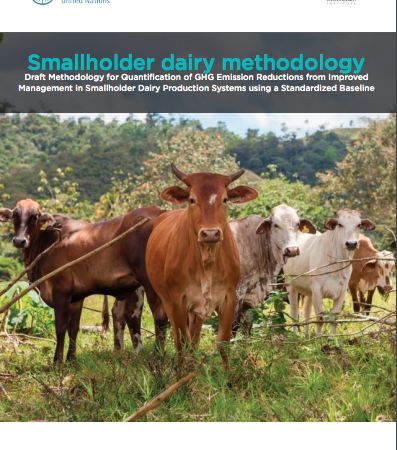
Introduction
1. The use of standardized baselines can potentially reduce transaction costs, enhance transparency, objectivity and predictability, and facilitate enhanced access to carbon markets, particularly for project types where high transaction costs pose barriers to application of project-based approaches. This small-scale methodology is developed to be compatible with The Gold Standard Agriculture Requirements, and users of this methodology are required to satisfy the requirements therein, such as (but not limited to) sustainability.
2. This methodology presents requirements for development and assessment of a standardized baseline for quantification of greenhouse gas (GHG) emission reductions in smallholder dairy systems. 1 It also includes guidance for quantification of baseline GHG emissions from dairy production in a defined geographical area within a country, for quantification of project GHG emissions, leakage, and net emission reductions due to project implementation.
3. The following table describes the key features of the methodology:

4. The general approach outlined in the methodology is based on the following key elements. A standardized baseline for the project region is set on the basis of a baseline survey, which establishes a statistically robust relationship between milk yields and the GHG intensity of milk production measured as kg CO2e * kg-1 fat and protein corrected milk (FPCM), i.e. mass of greenhouse gas emissions expressed as kg carbon dioxide equivalent per mass of FPCM expressed as kg. This statistical relationship provides estimated emission factors per kg FPCM. In both baseline and project scenarios, total emissions are calculated by multiplying the annual FPCM yield by the appropriate emission factors. Emission reductions represent the difference in the baseline and project scenario emission factors, multiplied by the project scenario total annual FPCM yield, adjusted for land use change leakage, as appropriate.








